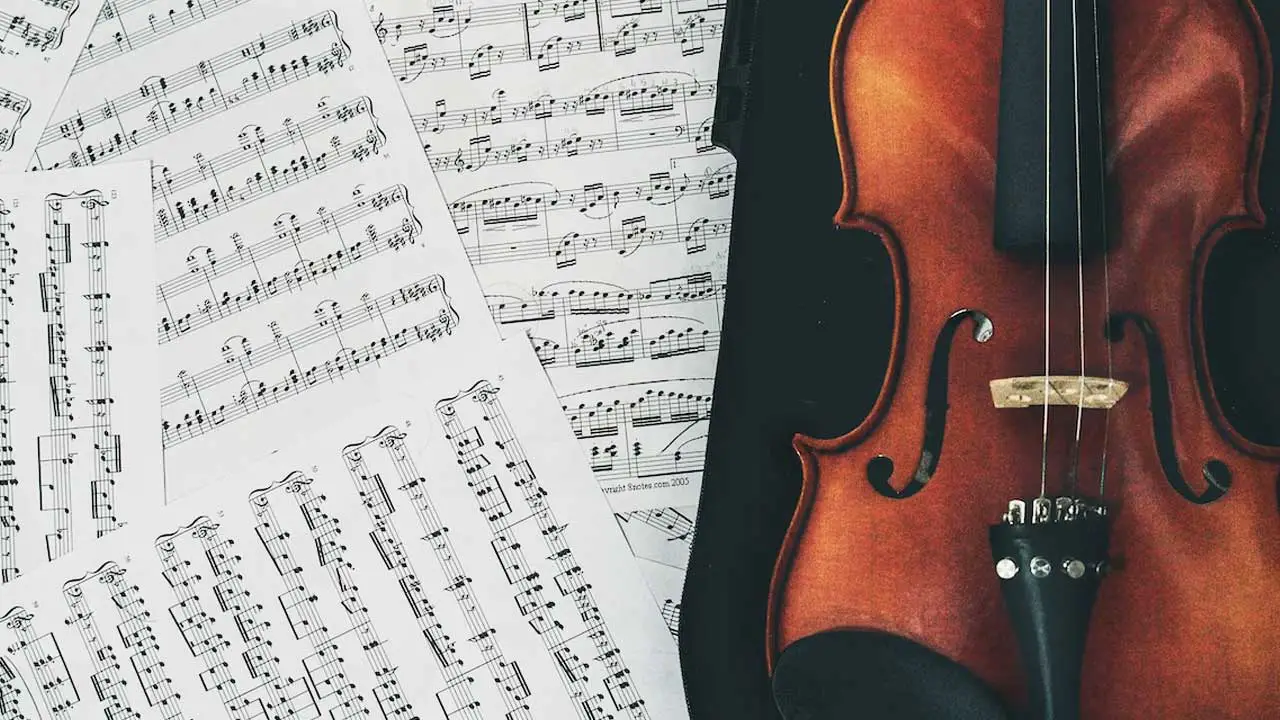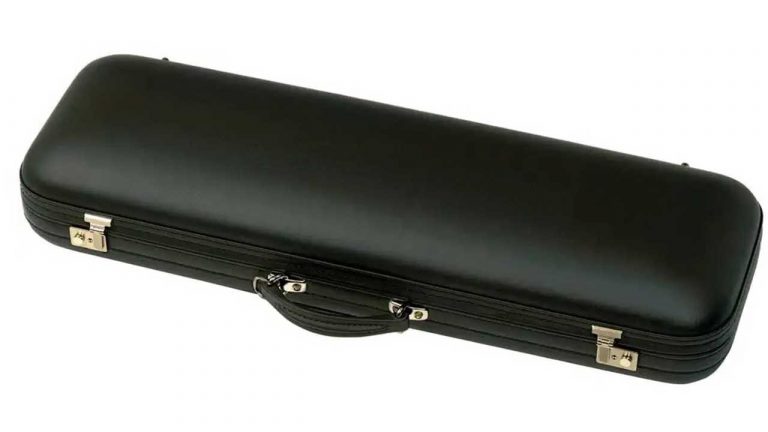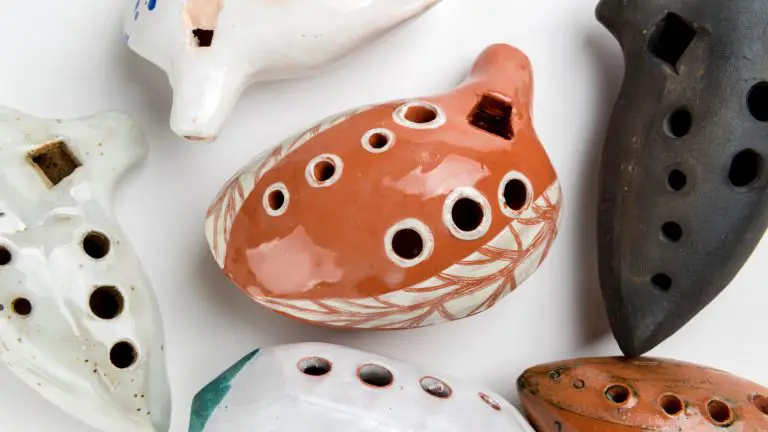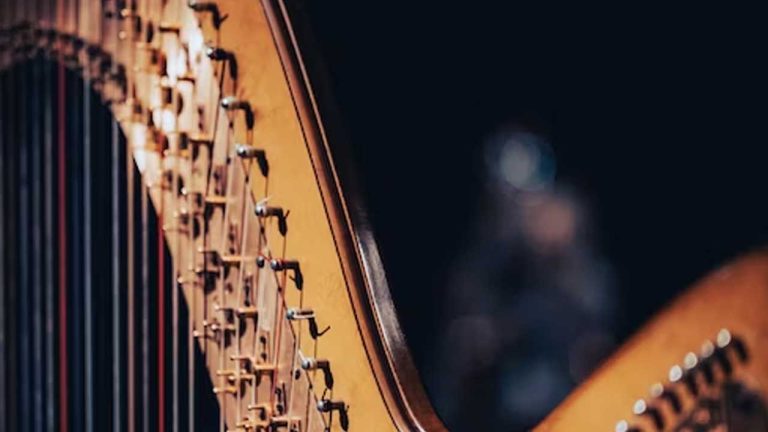How Hard Is It to Learn the Violin? Expert Opinion and Insights
Folkstrings.com is reader-supported. When you buy through links on our site, we may earn a small commission.
Are you considering learning to play the violin? If so, you may be wondering how hard it is to learn this instrument.
The answer is not straightforward, as it depends on various factors, such as your musical background, your dedication to practice, and your physical abilities.
In Summary
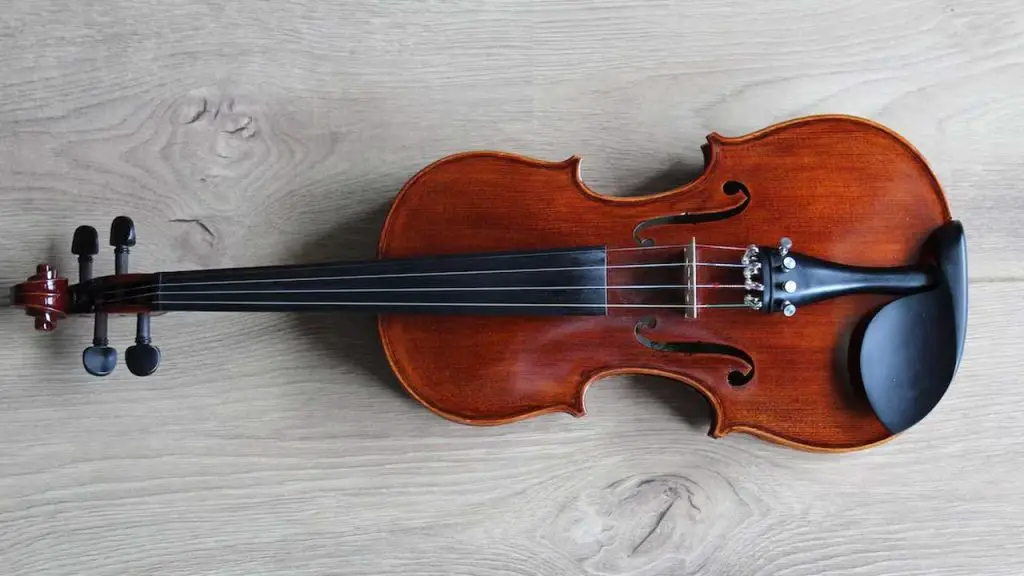
Learning to play the violin is challenging, but it is not impossible. One of the reasons why it is considered difficult is that it requires a lot of physical coordination and control.
Unlike other instruments, such as the guitar or the piano, the violin does not have frets or keys to guide your fingers.
Instead, you need to place your fingers on the right spot on the fingerboard, which requires a good sense of pitch and intonation. Additionally, you need to hold the bow correctly and apply the right amount of pressure and speed to produce a good sound.
Table of Contents
Is the Violin Difficult to Learn?
Learning the violin can be a challenging task, especially for beginners. However, with the right approach and dedication, anyone can learn to play this beautiful instrument. In this section, we will discuss some of the challenges that beginners may face when learning the violin and provide some tips on how to approach learning this instrument.
Challenges for Beginners
One of the biggest challenges for beginners is developing the correct posture and holding the violin and bow correctly. This can be difficult and uncomfortable at first, but with practice, it will become more natural. Another challenge is learning to produce a good sound on the violin. This requires proper bowing technique and finger placement.
Beginners may also find it challenging to read sheet music and understand the different symbols and notation.
Approach to Learning the Violin
To successfully learn the violin, it is essential to have a structured approach. Here are some tips to help you get started:
- Find a good teacher: A qualified teacher can help you develop proper technique and provide guidance and feedback.
- Practice regularly: Consistent practice is key to improving your skills. Aim to practice for at least 30 minutes a day.
- Start with simple pieces: Begin with easy pieces and gradually work your way up to more challenging music.
- Focus on technique: Spend time practicing proper posture, bowing, and finger placement.
- Listen to recordings: Listening to recordings of skilled violinists can help you develop your ear and understand how the instrument should sound.
In conclusion, while learning the violin can be challenging, it is not impossible. With the right approach and dedication, anyone can learn to play this beautiful instrument. Remember to be patient with yourself and enjoy the process of learning.
The Instrument and Its Components
Learning to play the violin can be challenging, but it is also rewarding. Before you start, it is important to understand the instrument and its components.
The Sound of the Violin
The sound of the violin is what makes it such a beautiful and unique instrument. It is created by the vibration of four strings that are stretched across a wooden body. The strings are played with a bow, which is made of horsehair. To produce a good sound, you need to apply the right amount of pressure and speed with the bow.
The Parts of the Violin
To understand how the sound is produced, it is important to know the different parts of the violin. Here are the main components:
The Body
The body of the violin is made of wood and has an hourglass shape. It is divided into two parts: the upper bout and the lower bout. The sound holes, or f-holes, are located on either side of the bridge.
The Strings
The strings are the most important part of the violin. They are made of metal and are tuned to specific pitches. The tuning pegs are used to adjust the tension of the strings and change their pitch.
The Bridge
The bridge is a small piece of wood that supports the strings and transmits their vibrations to the body of the violin. It is important to position the bridge correctly to produce a good sound.
The Bow
The bow is made of wood and horsehair. It is used to play the strings and create sound. Rosin is applied to the bow hair to create friction and produce a clear sound.
Learning to play the violin requires patience and dedication. By understanding the different components of the instrument and how they work together, you can begin to develop your skills and produce beautiful music.

Technique and Practice
Learning the violin requires a lot of practice and dedication to master the various techniques involved. In this section, we will discuss some of the most important aspects of violin technique and practice.
Bowing Techniques
Bowing is an essential part of playing the violin. The bow produces the sound, and the way you use it can greatly affect the quality of the sound. It is important to practice proper bowing techniques to avoid producing scratchy or unpleasant sounds. Here are some tips to help you improve your bowing technique:
- Hold the bow correctly: The bow should be held with a relaxed grip, using the fingers, not the palm of the hand.
- Use the full length of the bow: The bow should be used from frog to tip to produce a full, rich sound.
- Apply the correct amount of pressure: The amount of pressure applied to the bow can affect the volume and quality of the sound produced.
- Practice different bowing techniques: There are many different bowing techniques, such as staccato, legato, and spiccato, that you should practice to improve your overall bowing technique.
Finger Placement and Muscle Memory
Finger placement and muscle memory are crucial to playing the violin accurately. The violin has no frets, so it is important to develop muscle memory to hit the correct notes. Here are some tips to help you improve your finger placement and muscle memory:
- Practice scales: Scales are a great way to practice finger placement and develop muscle memory.
- Use a metronome: A metronome can help you develop a steady rhythm and improve your muscle memory.
- Practice shifting: Shifting is the movement of the left hand up and down the fingerboard to play different notes. It is important to practice shifting to improve your muscle memory and accuracy.
Tuning and Intonation
Tuning and intonation are essential to producing a good sound on the violin. Here are some tips to help you improve your tuning and intonation:
- Use a tuner: A tuner can help you tune your violin accurately.
- Practice playing in tune: Practice playing with a drone or backing track to help you develop your intonation skills.
- Listen carefully: Listen carefully to the sound you are producing and adjust your finger placement as necessary.
Overall, developing good technique and practicing regularly are key to learning the violin. With dedication and practice, you can improve your bowing technique, finger placement, muscle memory, tuning, and intonation, and become a skilled violinist.
Renting vs. Buying a Violin
When it comes to learning the violin, one of the first decisions you’ll need to make is whether to rent or buy an instrument. Both options have their pros and cons, so it’s important to consider your personal situation before making a decision.
Renting a Violin
Renting a violin can be a good option if you’re just starting out and don’t want to commit to a large financial investment. Renting allows you to try out the instrument without a significant upfront cost, and many rental programs offer the option to upgrade to a higher-quality instrument as your skills improve.
Another advantage of renting is that the rental shop will usually take care of repairs and maintenance, which can save you time and money in the long run. This can be especially helpful if you’re not familiar with the instrument and don’t know how to properly care for it.
However, renting can also be more expensive in the long run, and you may end up paying more than the cost of buying a violin outright. Additionally, rental instruments are often of lower quality than those you can buy, which can affect your playing experience and progress.
Buying a Violin
Buying a violin can be a good investment if you’re committed to learning the instrument and plan to continue playing for a long time. Owning your own instrument allows you to become familiar with it and develop a deeper connection to the music you create.
When buying a violin, it’s important to consider the quality of the instrument and the reputation of the seller. A higher-quality instrument will usually have a better sound and be more enjoyable to play, while a reputable seller can provide guidance and support as you navigate the world of violin ownership.
Of course, buying a violin can also be expensive, and it’s important to budget accordingly. You may also need to factor in the cost of repairs and maintenance, which can add up over time.
Ultimately, the decision to rent or buy a violin depends on your personal situation and goals. Consider your budget, commitment level, and playing goals before making a decision, and don’t be afraid to seek advice from experienced players or music teachers.
Finding a Violin Teacher
Learning the violin can be a challenging task, but a good teacher can make a world of difference. Here are some things to consider when looking for a violin teacher.
Private Lessons vs. Online Courses
When it comes to learning the violin, there are two main options: private lessons or online courses. Private lessons are the traditional way of learning the violin and offer the advantage of one-on-one instruction. This allows the teacher to tailor the lessons to your individual needs and provide immediate feedback on your playing. Online courses, on the other hand, offer the convenience of learning from home and can be more affordable than private lessons. However, they lack the personalized attention of a private teacher and may not be suitable for beginners.
Recommendations
When looking for a violin teacher, it’s always a good idea to ask for recommendations from other musicians or music teachers. They may be able to recommend a teacher who specializes in the style of music you want to learn or who has a teaching style that suits your learning needs. You can also check with local music schools or community centers to see if they offer violin lessons or can recommend a teacher.
Resources
There are several online resources that can help you find a violin teacher. Websites like LessonRating.com and TakeLessons.com allow you to search for teachers in your area and read reviews from other students. The Suzuki Association of the Americas also maintains a database of certified Suzuki teachers, which can be a good option for young beginners.
In conclusion, finding the right violin teacher can make all the difference in your learning journey. Consider your options carefully and don’t be afraid to ask for recommendations or try out different teachers until you find the right fit for you. Good luck on your violin journey!
Playing the Violin in an Orchestra
Playing the violin in an orchestra is a dream come true for many violinists. It is a chance to showcase your skills and play alongside other talented musicians. However, it is not an easy feat and requires a lot of hard work and dedication.
To become an orchestra violinist, you must have a strong foundation in playing the violin. This means mastering the basics such as proper posture, bowing technique, and finger placement. You must also be able to read sheet music and play in tune.
Once you have mastered the basics, you can start practicing with an orchestra. This will help you develop your skills further and learn how to play in sync with other musicians. It is important to listen carefully to the other instruments and adjust your playing accordingly.
Playing in an orchestra also requires discipline and teamwork. You must be able to follow the conductor’s instructions and play your part at the right time. You must also be able to work with other musicians and blend your sound with theirs.
In addition to playing in an orchestra, you may also have the opportunity to perform solos or play in smaller ensembles. This will help you showcase your individual skills and stand out as a musician.
Overall, playing the violin in an orchestra is a challenging but rewarding experience. It requires hard work, dedication, and a love for music. With practice and perseverance, you can become a skilled orchestra violinist and make beautiful music with others.
| Pros | Cons |
|---|---|
| Opportunity to showcase your skills | Requires discipline and teamwork |
| Chance to play alongside other talented musicians | Can be challenging and require a lot of practice |
| Develops your skills further | Must be able to adjust your playing to other instruments |
| Can lead to opportunities to perform solos or in smaller ensembles | |
| Rewarding experience |
Conclusion
Learning the violin is a challenging and rewarding experience that requires patience, time, and investment. Although it may seem difficult at first, with consistent practice and dedication, anyone can learn to play this versatile instrument.
One of the most rewarding aspects of learning the violin is the sense of accomplishment that comes with mastering a difficult piece. It takes time to develop the skills necessary to play the violin well, but the feeling of satisfaction that comes with playing a beautiful melody is well worth the effort.
Patience is key when learning the violin. It can be frustrating to make mistakes and struggle with difficult techniques, but it is important to remember that progress takes time. With each practice session, you will improve and become more confident in your abilities.
Investing in a quality instrument and finding a good teacher can also make a big difference in your progress. A good teacher can provide guidance and feedback to help you improve more quickly, while a quality instrument will make it easier to produce a beautiful sound.
Finally, the violin is a versatile instrument that can be used in a variety of musical genres, from classical to folk to rock. Whether you are interested in playing in an orchestra or simply want to learn for your own enjoyment, the violin is a rewarding instrument to master.
In summary, while learning the violin is not easy, it can be a highly rewarding experience for those who are willing to invest the time and effort. With patience, dedication, and the right resources, anyone can learn to play this beautiful and versatile instrument.
Author Profile
-
Daniel Johnstone is an English writer with a love for stringed instruments from around the world.
He shares his love for these instruments through his writing for folkstrings.com, a website dedicated to all things related to folk string music.
Daniel's passion for music started at a young age, and he has since become an accomplished musician, playing guitar, cavaco, and recently, the harp.
His dedication to learning and sharing his knowledge of stringed instruments is evident in his insightful and engaging blog posts. Whether you're a seasoned musician or a beginner, Daniel's writing is sure to inspire and entertain you.
When he's not playing music or writing, you can find Daniel exploring new instruments and seeking out new sounds to share with his readers.
Latest entries
 AutoharpApril 4, 2024What Is the Autoharp Made Of: Exploring Its Materials and Craftsmanship
AutoharpApril 4, 2024What Is the Autoharp Made Of: Exploring Its Materials and Craftsmanship AutoharpApril 4, 2024Is Autoharp Easy to Play? Unveiling the Truth for Beginners
AutoharpApril 4, 2024Is Autoharp Easy to Play? Unveiling the Truth for Beginners AutoharpApril 4, 2024What Is an Autoharp Worth? Your Guide to Pricing and Value
AutoharpApril 4, 2024What Is an Autoharp Worth? Your Guide to Pricing and Value AutoharpApril 4, 2024Are Autoharp and Zither the Same Thing? Unraveling String Instrument Myths
AutoharpApril 4, 2024Are Autoharp and Zither the Same Thing? Unraveling String Instrument Myths
Affiliates:
This post may contain affiliate links that at no additional cost to you, the site may earn a small commission. We only recommend products we would use ourselves and all opinions expressed on this site are our own.
Accuracy Advice:
While we strive to provide up-to-date and accurate information, the content in this article may not reflect the most current research or medical guidelines. We encourage readers to do further research and consult with professionals for more personalized advice.
Our Recommendations:
The products and services mentioned in any of our articles are recommended based on our independent research and personal experience. We are not sponsored by any company. We aim to suggest products and services we believe are of high quality and could be beneficial to our readers.

